Converting your emails to PDF format is exceptionally beneficial, particularly for preserving essential data or streamlining client correspondence.
Regardless of whether you're navigating Outlook on the web or utilizing the desktop version, PDF Reader Pro offers an effortlessly smooth process. Here's your guide to efficiently saving Outlook emails as PDFs.
How To Save Outlook Emails as PDFs Using Outlook Online
Step 1: Retrieve Your Email
Initially, make your way to your inbox on Outlook.com and identify the specific email you wish to convert into a PDF.
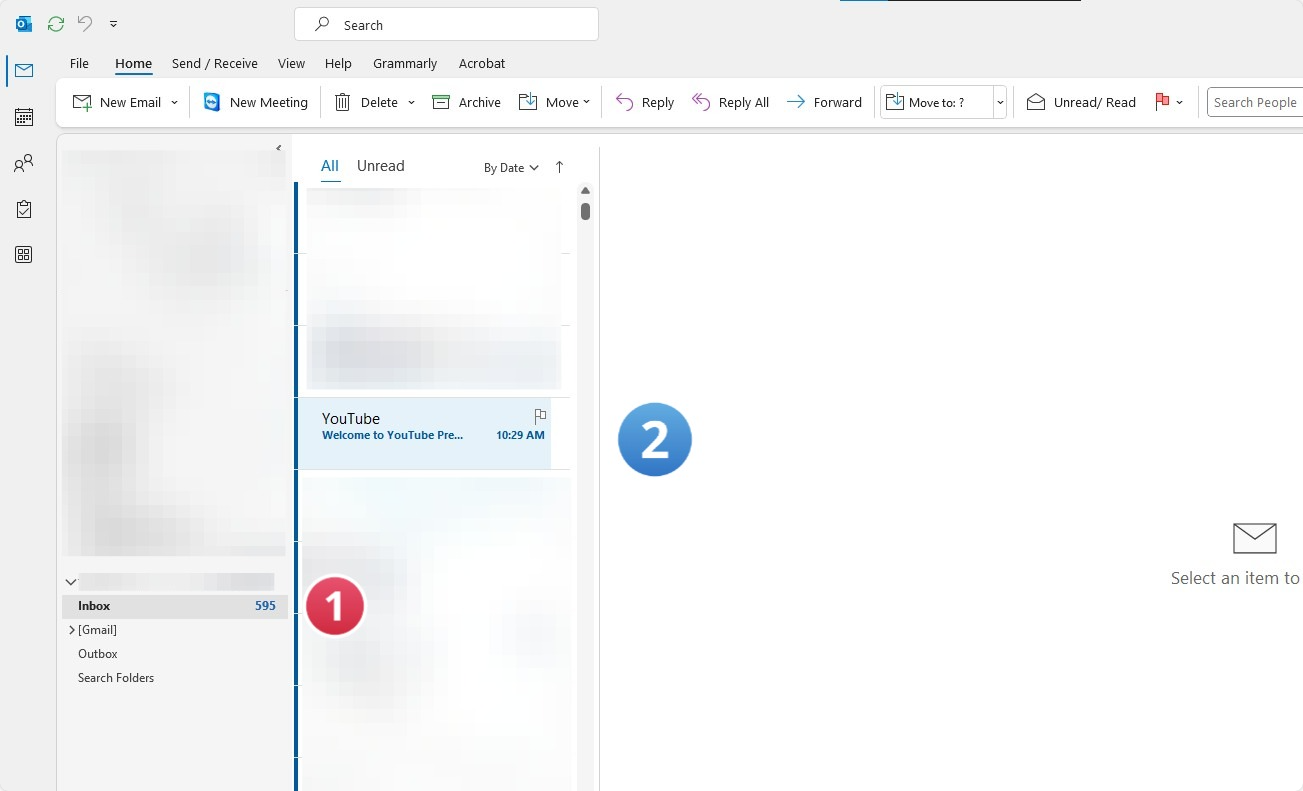
Step 2: Proceed to the More Actions Menu
Access the email of interest and select the three-dot symbol, referred to as the "More actions" icon, situated at the upper part of the email interface.
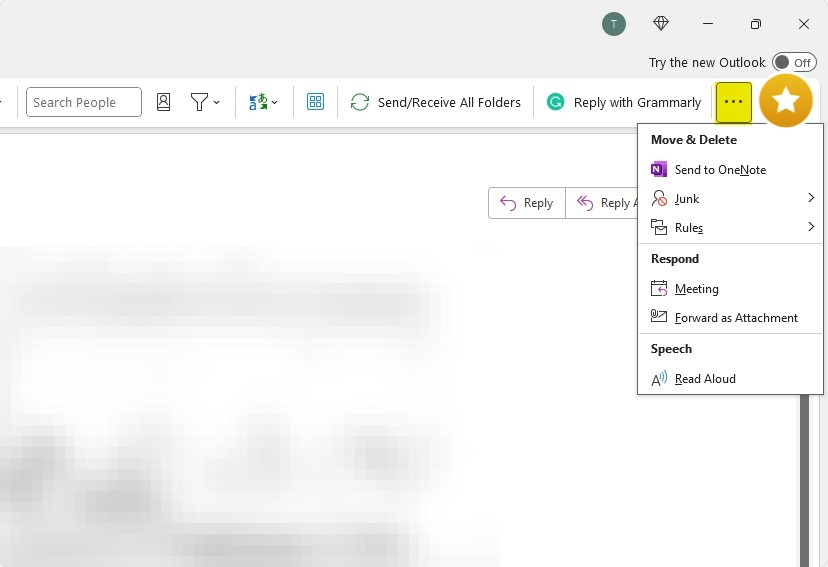
Step 3: Activate the Print Function
Choose "Print" from the dropdown options presented. This will generate a preview of your email, from which you can proceed by clicking "Print" once more to bring up the print options.
Expert tip: Employ the shortcut Control + P for Windows or Command + P for Mac to expedite your navigation to the print menu.
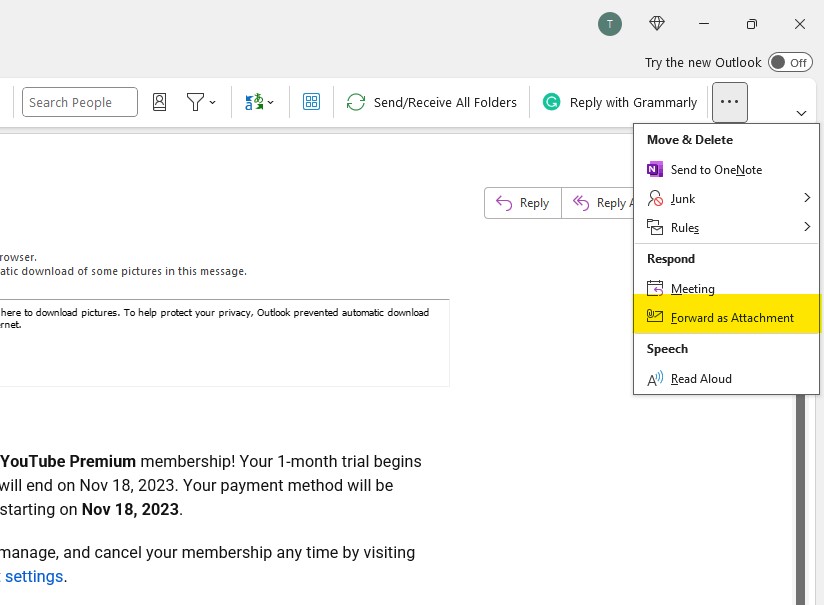
Step 4: Modify Print Preferences
Within the print dialog box, adjust the page and layout specifications to your preference, following a process akin to that of printing any standard document.
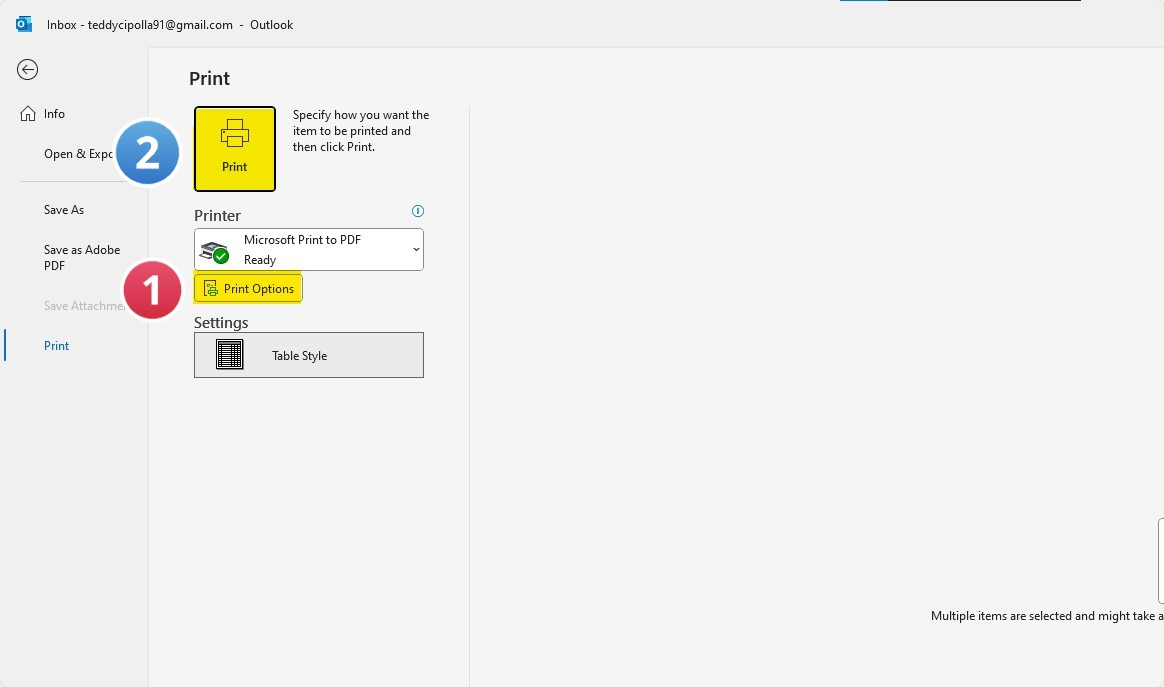
Step 5: Choose PDF as Your Save Option
From the "Destination" section, select the "Save as PDF" option in the drop-down menu, then move forward by hitting the "Save" button.

Step 6: Conclude with File Specifics
Pick an appropriate directory and assign a name to your newly created PDF file.
Step 7: Secure the Document
Finalize the procedure by hitting "Save," thereby preserving the email as a PDF file on your computer.
How To Save Outlook Emails as PDFs Using the Outlook App
Step 1: Identify Your Email
Launch the Outlook application and navigate through your emails. Click to open the one you wish to preserve as a PDF.
Step 2: Access Print Settings
Head to the "File" menu in the upper left corner, and from the subsequent options, select "Print." You're on your way to creating a permanent copy of your communication.

Step 3: Set PDF as Printer Destination
Among the printer choices, locate and select "Microsoft Print to PDF." This option is your gateway to transitioning your email from digital to physical.
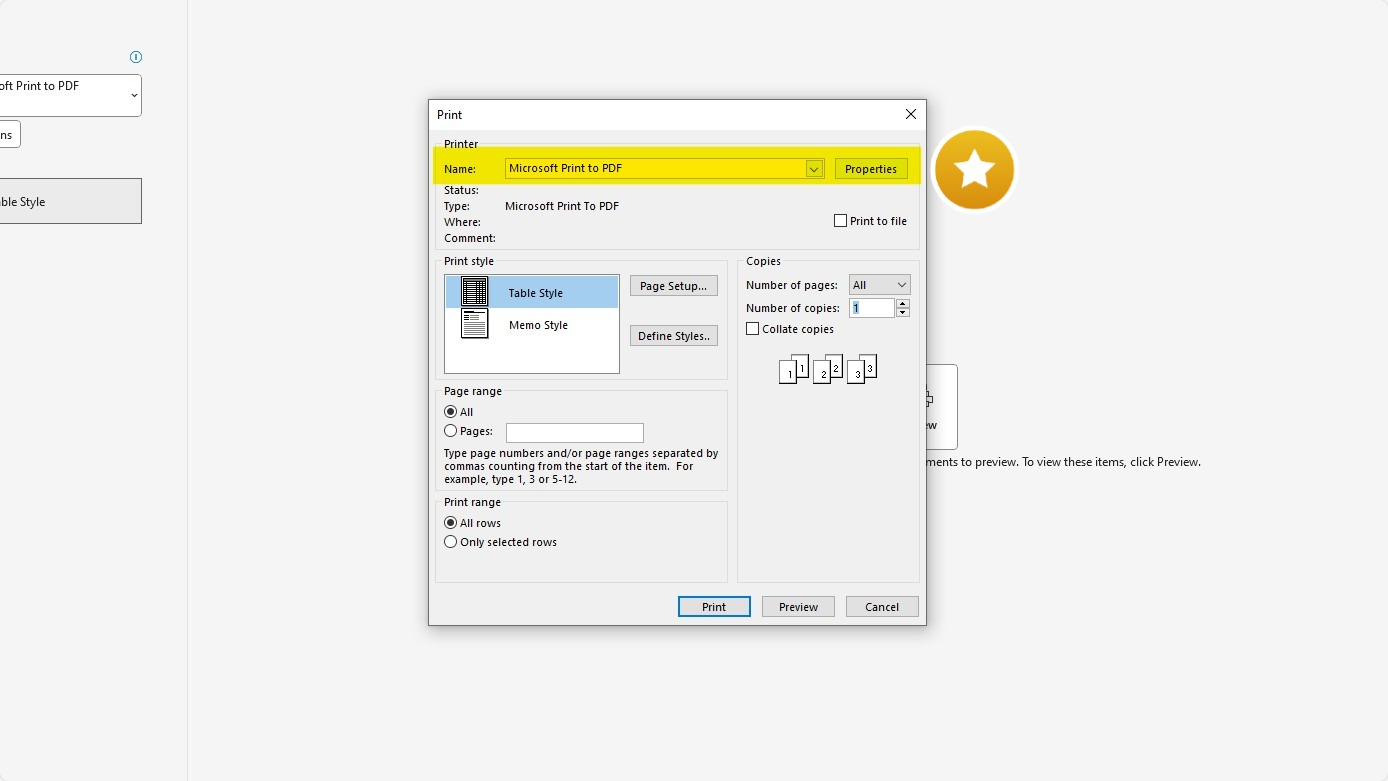
Step 4: Begin the Saving Sequence
Hit "Print," a somewhat misleading term, as you’re not actually printing but saving. You’ll be prompted to choose a destination and name for your email PDF.
This step is where you ensure your document is easily identifiable and retrievable.
Step 5: Finalize Your Document's Storage
Simply click "Save" and breathe a sigh of relief. Your email now exists as a PDF document, safely stored on your computer, immune to accidental deletions and the chaos of an overflowing inbox.
How to Group Multiple Emails Into a Single PDF Document
If you have numerous emails that you want to compile into one PDF, follow these steps:
Step 1: Group Your Emails
Select multiple emails by pressing shift and clicking on each email you want to include. Alternatively, use control and click to select individual emails non-sequentially.
With your emails highlighted, go to "File" > "Print," choose "Microsoft Print to PDF," and save the PDF to your computer, combining all selected emails.
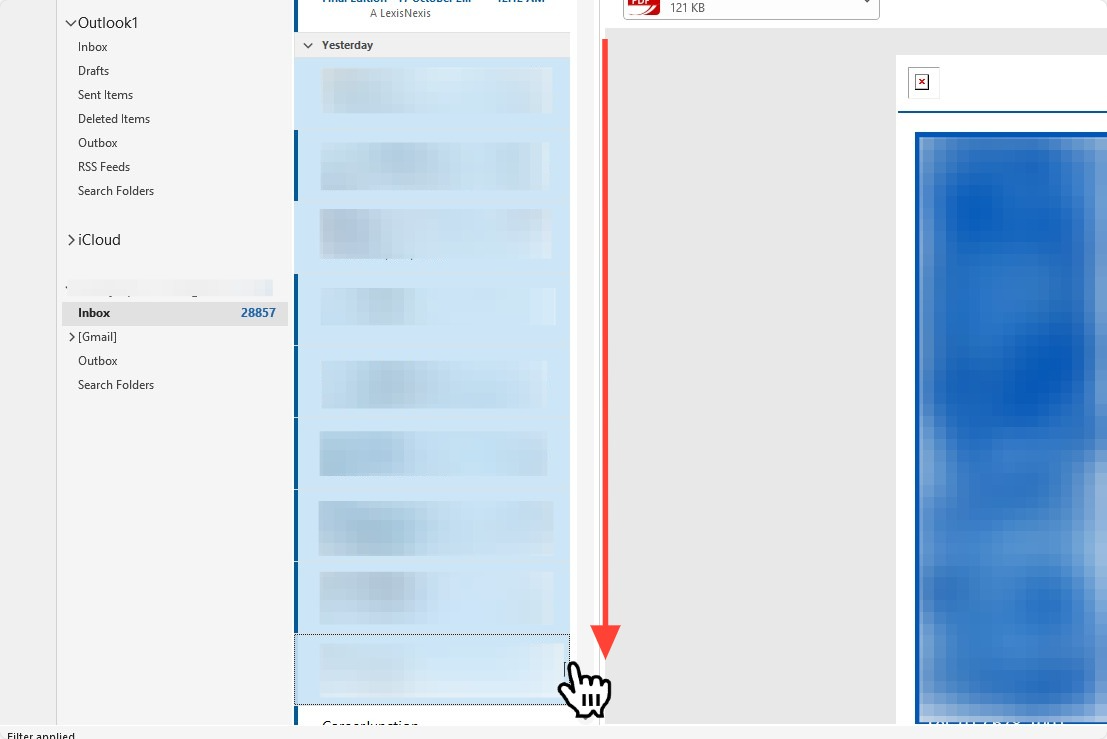
Step 2: Organize Attachments
If your emails have attachments, save them separately as PDFs. You might need to convert different file types (like Word or Excel files) into PDF format. After saving attachments as PDFs, you can merge them into your email PDF document.
Step 3: Merge and Organize Documents
Using PDF Reader Pro's 'Merge PDF' and 'Reorder PDF' tools, you can combine multiple PDFs into one and arrange them in your preferred order.
This is particularly useful for creating a single, organized document out of multiple emails and attachments.
By utilizing these straightforward steps, you can efficiently organize your digital communications, creating a streamlined PDF document of your important emails, all with the help of PDF Reader Pro.
How To Save Outlook Emails as a Single PDF for Windows
Transforming a multitude of emails into a single, organized PDF can be the ultimate solution for digital efficiency. Here’s the most straightforward way to do this:
Step 1: Initiate the Merge Process
Begin by selecting "Merge" from the Home page of your PDF Reader Pro, setting the stage for a more organized document.
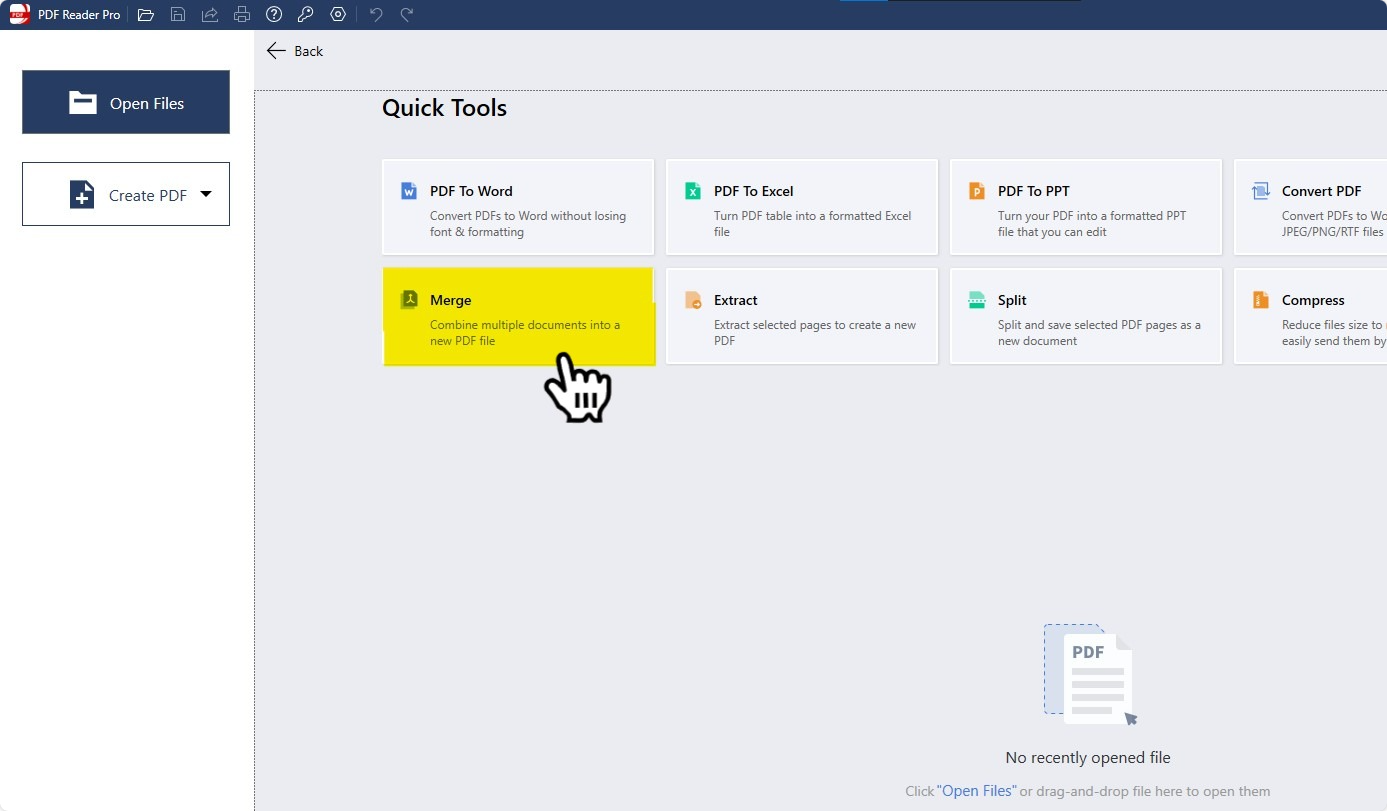
Step 2: Choose Desired Emails
Next, carefully select all the emails you intend to combine. This compilation will form your comprehensive PDF document, ensuring everything you need is in one accessible place.
Step 3: Activate the Merge
Once your emails are selected, proceed by clicking the "Merge" button that appears in the subsequent pop-up window. This command is the catalyst for the consolidation.
Step 4: Personalize Your File
After the merge, assign a specific name to your new PDF to reflect its contents, ensuring easy retrieval later. Save it, and voila, your clutter of emails is now a neatly organized PDF.

How To Save Outlook Emails as a Single PDF for Mac
Mac users, rejoice! We have a streamlined process for you to merge multiple emails into a single, organized PDF.No more sifting through an endless sea of messages—here's how to bring them all together seamlessly:
Step 1: Initiate with 'Merge'
Kickstart the process right from your Home screen; just choose the 'Merge' option. It's your first step towards digital decluttering.

Step 2: Curate Your Emails
Browse and choose all the emails you're looking to consolidate.

Step 3: Seal the Deal with 'Merge'
Now, click on 'Merge' and watch the magic happen.

How to Save Outlook Emails as PDF: Best Practices
Here's a meticulous guide to achieving optimal results with PDF Reader Pro, without the necessity for tools like Adobe Acrobat.
-
Seamless Transition to PDF Document: Initiate the process by opening the email within your Outlook application. Head to the 'File' tab on the menu bar, selecting the 'Print' option. Contrary to direct printing, change your printer option to 'PDF Printer' to ensure the conversion of email messages into PDF files.
-
Mastering the Drop-Down Menu: Post-selection, a dialog box will appear, offering different printing specifics. Here, navigate through the drop-down menu to select 'Print to PDF' or a similar option, diverting the email from a physical printout to a digital file format.
-
Preservation of Email Integrity: When saving emails to PDF, especially for legal or archival purposes, maintain the original format, including the message header and any external images. This step ensures that crucial information, such as email addresses, timestamps, and conversation threads, remain intact in the conversion.
-
Attachment Management: For emails with attachments, the process involves extra care. Save the attachments separately, ensuring their file type doesn't disrupt the PDF document's uniformity. If necessary, use PDF Reader Pro to convert and merge them into a single PDF file, creating a comprehensive PDF portfolio.
-
Structured Storage: Opt for a systematic folder structure when archiving your emails in PDF format. Whether you're storing them on a network share or your local drive, a categorized approach aids in quick retrieval. Be mindful of the PST file limitations and consider breaking down larger archives into manageable chunks.
-
Consolidation and Accessibility: If dealing with multiple email files, leverage PDF Reader Pro's merging tools. Combine relevant email communications into one accessible PDF, ensuring a streamlined file that's easy to share and review.
-
Opt for a Reliable Conversion: While Adobe Acrobat Reader is a common tool, PDF Reader Pro offers a more intuitive interface and toolkit for your conversions. Its capability goes beyond basic functionalities, providing an advanced yet straightforward platform for managing emails to PDF files.
By adhering to these best practices, you transform a clutter of emails into a well-organized, secure, and easily navigable PDF portfolio file.
Check out our tips on saving an email as a PDF.
Whether for legal documentation, project references, or personal archiving, these simple steps optimize your approach to handling crucial communications with the professionalism they deserve.
How to Save Outlook Emails as PDF: FAQ
Navigating the digital landscape of email management, particularly when it comes to converting and archiving emails, often brings up several questions. Below, we address some common queries related to saving Outlook emails as PDFs.
Can I Convert an Entire Email Folder to PDF?
Absolutely. While individual email conversion is common, users also have the option to archive entire email folders for organizational or backup purposes.
By using PDF Reader Pro, you can easily select a folder within your Outlook, and with a few clicks, every message within gets converted into PDF format, maintaining the original structure and content integrity, including email fields and timestamps.
How Are Email Attachments Handled During Conversion?
Email attachments require special attention during the conversion process. Generally, they remain in their original file format when you convert an email to PDF.
However, with dedicated features in PDF Reader Pro, you can separately convert these attachments into PDFs and then append them to the main email PDF, ensuring a comprehensive document that includes both the message and its accompanying files.
Do I Need Separate Email Conversion Applications?
No, there's no need for standalone email to PDF converter applications. PDF Reader Pro streamlines this process, eliminating the need for multiple software.
Its advanced features accommodate various needs, from basic email archiving to complex email management tasks, all within a single, user-friendly interface.
Can I Automate the Process of Converting Emails to PDF?
While the concept of converting email by schedule is appealing, particularly for ongoing email archiving, this feature depends largely on your email provider's capabilities and the settings within your PDF software.
PDF Reader Pro, known for its versatility, doesn’t directly support automation in email conversion. However, it makes the process efficient and straightforward, minimizing the manual effort involved.
Are Email Headers and Timestamps Preserved in the PDF?
Yes, when converting emails to PDF files, it's crucial to maintain the authenticity of the communication, which includes preserving email headers and timestamps.
These elements are crucial for context, especially in professional or legal scenarios. PDF Reader Pro ensures these components remain intact, replicating the original message's details in the converted PDF document.
How Does This Process Benefit Email Management?
Converting emails to PDF format significantly enhances email management, especially for professionals and organizations handling large volumes of critical communications.
This approach not only secures the content against unauthorized alterations but also simplifies search and retrieval, as PDFs are more easily organized and indexed than thousands of individual emails.
Whether for legal reference, project management, or personal record-keeping, PDF format ensures your content remains accessible and secure.
This FAQ aims to clarify the process and benefits of converting emails into PDFs. With the right tools, such as PDF Reader Pro, this task becomes a seamless part of your workflow, enhancing productivity, and ensuring the consistency of your digital records.









 Free Download
Free Download Free Download
Free Download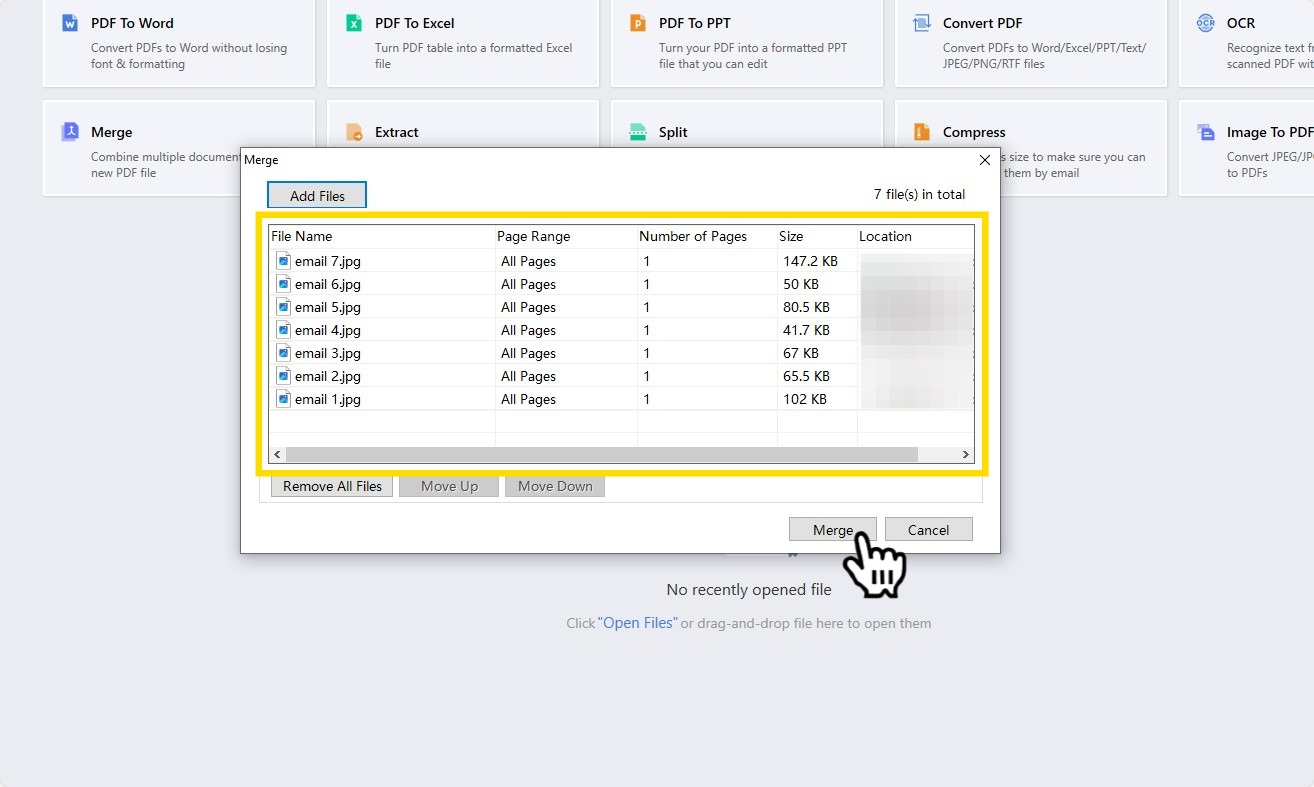




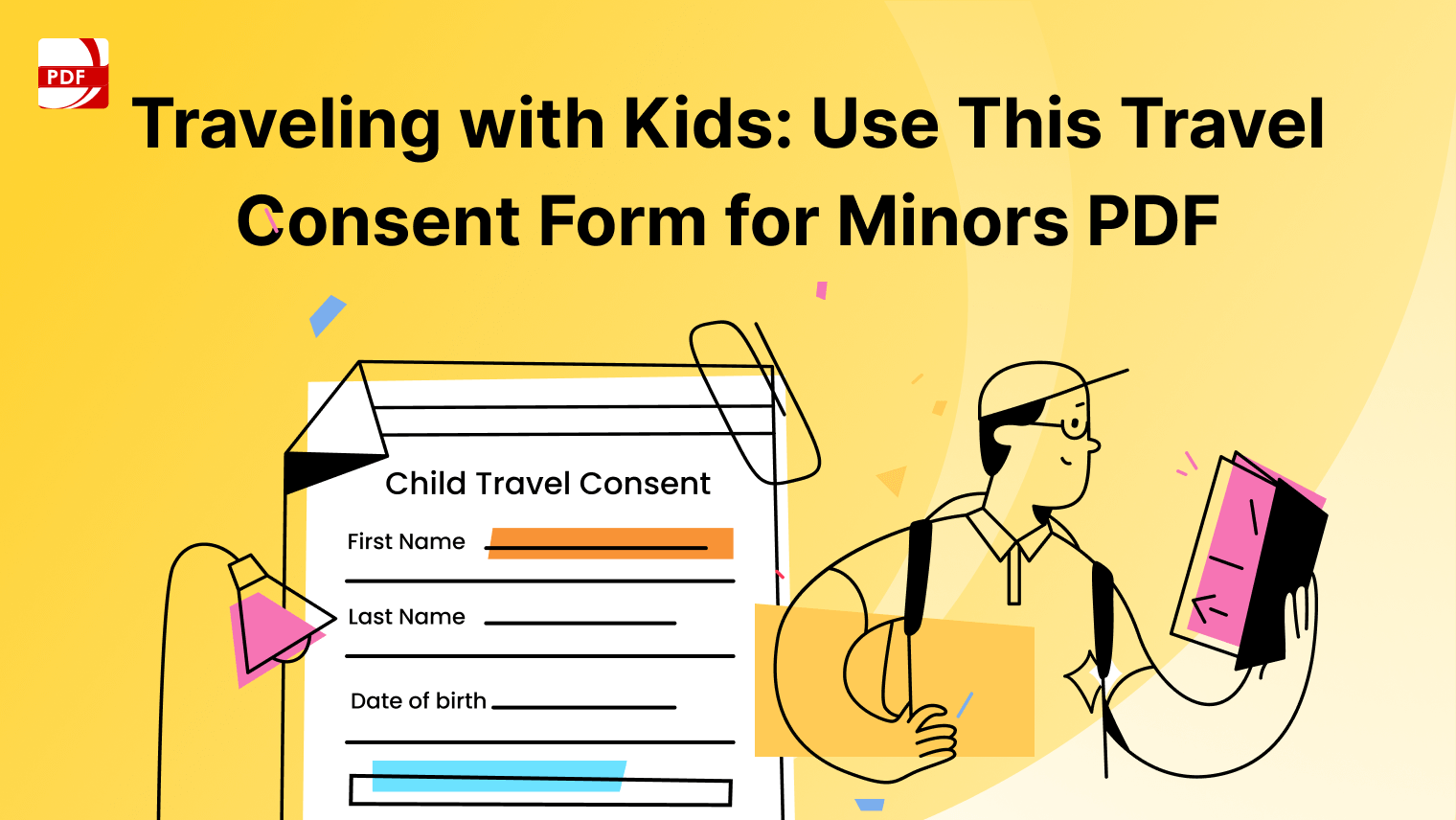
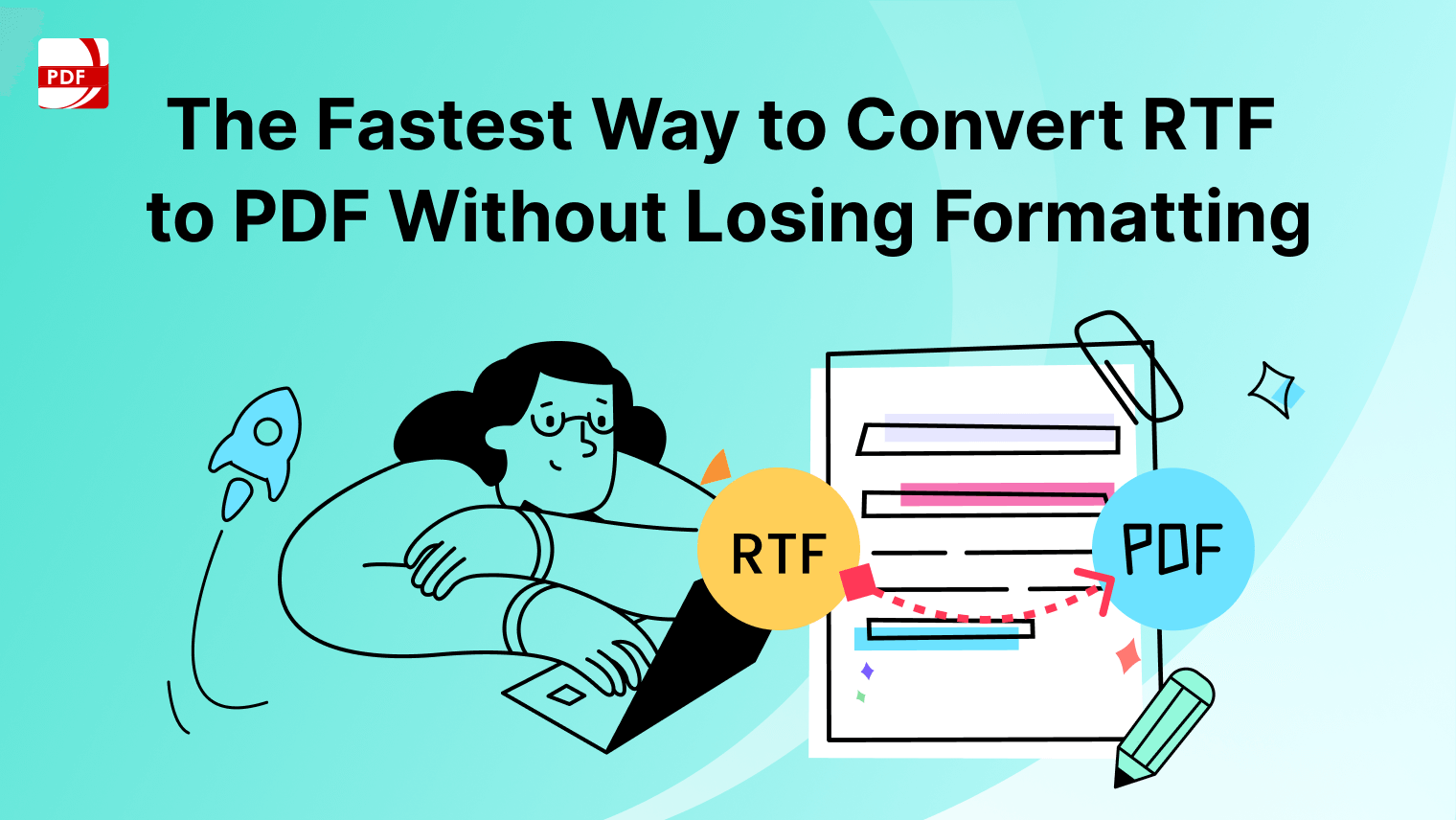
 Support Chat
Support Chat